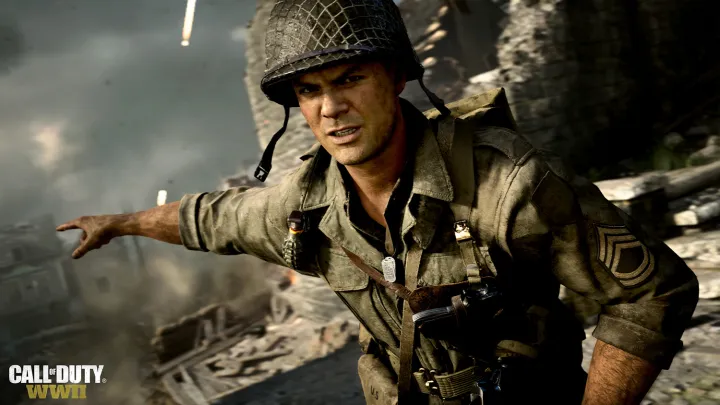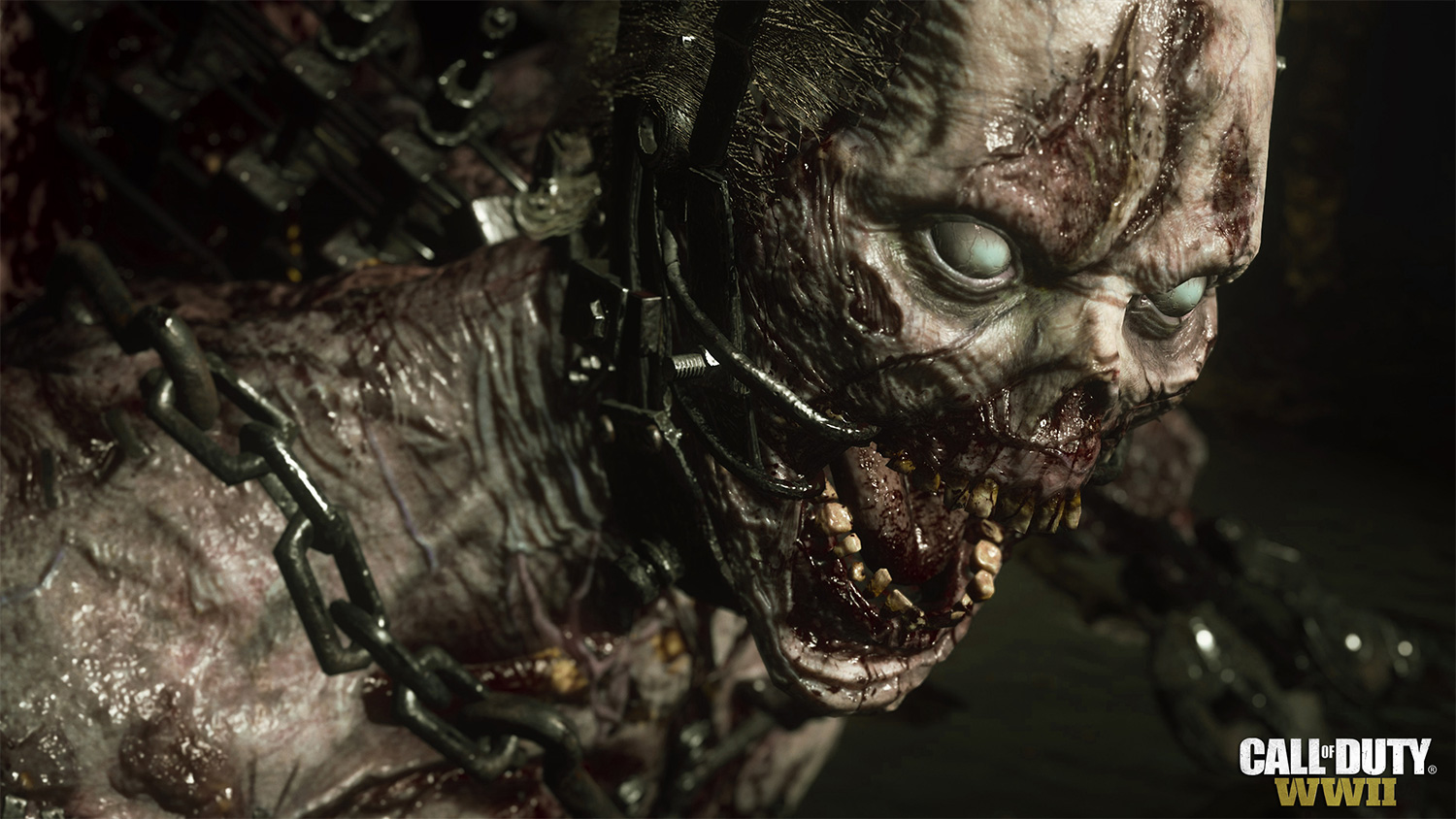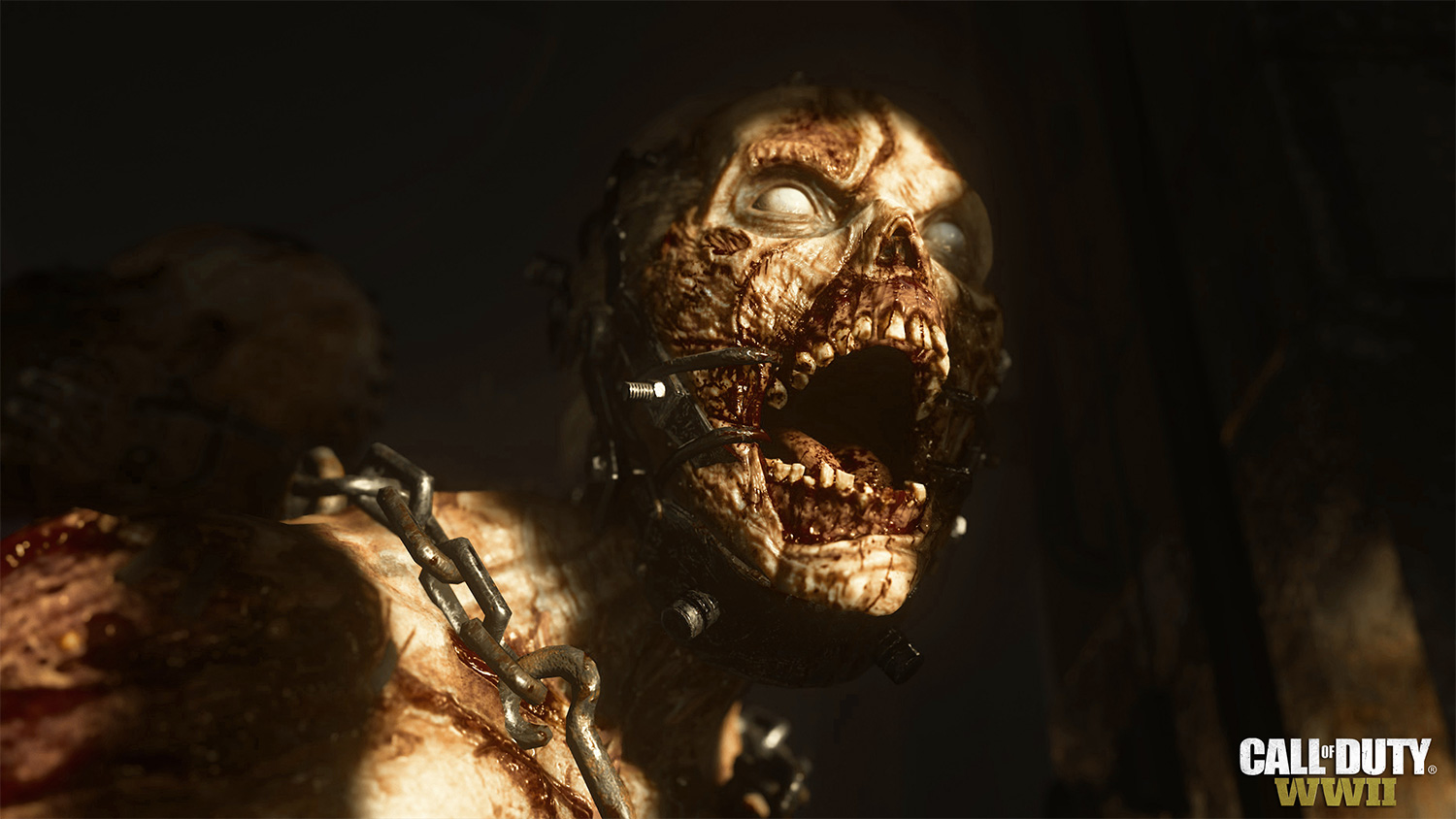- Character-driven story
- “War” mode is a multiplayer standout
- Authentic World War II set pieces, weapons, and sounds
- Addictive, challenging zombies mode
- Headquarters feels tacked on
- A bit too bombastic at times
The carousel of Call of Duty entries has finally spun back to the beginning. After years spent in a techno-enhanced future initially conceived for Sledgehammer Games’ Call of Duty: Advanced Warfare, the first name in first-person shooters returns to franchise’s original setting — World War II.
The simply titled Call of Duty: WWII is anything but a simple nostalgia grab. Despite the obvious marketing draw — Activision can’t talk about the game without talking about how it brings CoD “back to its roots” — WWII feels like a thoughtful revision of the formula. Taking lessons learned from the franchise’s rotating cadre of developers — Infinity Ward and Treyarch — Call of Duty: WWII, as you’ll read in our review, breathes new life into the long-running first-person shooter franchise.
From its stellar, evocative campaign, to its engaging asymmetrical multiplayer mode “War,” to even the conceivably cringeworthy Nazi Zombies co-op madness, Call of Duty: WWII offers a well-rounded experience primed for every type of Call of Duty player.
A familiar story rises above
There’s a fine line between telling moving war stories that accurately reflect the reality of a conflict, and exploiting unspeakable horrors for entertainment. Too often, depictions of war come across as depraved murder romps, but Call of Duty: WWII navigates its weighty subject with poise and care. The campaign succeeds by drawing strong characters, and their nuanced relationships they form as they struggle to stay alive.
Your return to World War II begins, predictably, on the shores of Normandy. Ronald “Red” Daniels and the rest of the Army’s 1st Infantry Division have their sights on pushing through France into Germany. The D-Day mission winds up as a rather rote destroy artillery objective seen in many previous World War II centered games, but stands out due to the production values. It feels like it could be an outtake from Saving Private Ryan or Band of Brothers at times, only with better sound, more explosions, and a steadier rain of the pings, pangs, cries, and shouts of the entrenched beachside battle.
Broadly, the campaign reflect the campaign structure Call of Duty has relied on for years. You will still shoot an improbable number of enemies on your own, between narrow escapes from over-the-top explosions. Developer Sledgehammer has made a few significant mechanical changes do deter a care-free, run-and-gun approach, though. You can no longer sprint endlessly, and your health no longer regenerates.
Instead of running around with an endless amount of ammo and health, you must rely on your comrades to keep you supplied. Your squad can get you ammunition, grenades, and to highlight enemies with the help of a spotter. In addition to adding a degree of welcome difficulty, the mechanic encourages you to stick to your squad in a natural way. Each success feels more like a team effort, especially on higher difficulty levels. You feel more like you turned the tide, rather than simply clearing out a shooting gallery.
The gameplay serves as a mechanical anchor for the game’s emphasis on its characters.
These gameplay tweaks serve as a mechanical anchor for the game’s emphasis on its characters. As Red, you’ll forge a bond with fellow infantryman Robert Zussman, gain an admiration for your commanding officer Joseph Turner, and navigate a rocky relationship with second-in-command William Pierson (played by Josh Duhamel). The story moments bookend each mission, brought to life in absolutely gorgeous cinematics, put in the time to make you care about your comrades and the understand the risks they take.
Building on the tactics that led surprisingly compelling narrative in last year’s CoD, Infinite Warfare, the campaign makes you care about the dynamics at play for these brothers in arms, especially the unbreakable bond between Red and Zussman. That nuance does not necessarily apply to the supporting cast, but the core relationship still move things forward.
At the same time, the game takes steps to foster an understanding that any loss of life, even your enemies, takes its toll. In moments when German soldiers surrender, and you’re given the option of whether or not to execute them — it at least tries to convey the gravity of your actions in wartime.
We’ve watched, played, and read World War II fiction that begins at Normandy and ends at the Battle of Remagen at the Rhine before, but this campaign does an exceedingly adept job at depicting the gravity of the war by connecting you with its characters and ultimately making you care about their well-being. The immaculately detailed set pieces, the brilliant sound design, and the stunning character animations make this familiar trek more than just another World War II story.
The war isn’t over yet
Even with a superb campaign, the staying power and value, for many, of every Call of Duty game lives and dies by its competitive multiplayer. From our time with the game’s array of multiplayer formats, Call of Duty: WWII doesn’t disappoint. Replacing the verticality and swiftness of the recent high-tech entries like last year’s Infinite Warfare, 1940s infused action takes on a more methodical approach.
[War] is the most enthralling and rewarding Call of Duty variant in quite some time.
But before you even can hop into a match, you arrive at Headquarters, a free roaming social hub for new recruits, which feels like a stripped-down version of the Tower in Destiny 2. In addition to picking your loadout, you can commit to contracts, a set of daily and weekly objectives that dole out in game currency. You can also call in “supply crates” — loot boxes that can be earned regularly through play, but also bought with real money — holding cosmetic items to personalize your character’s appearance.
Beyond a scenic hangout overlooking Normandy where players customize their multiplayer characters, Headquarters also offers small sub-activities, such as shooting range duels with other players, and 1v1 matches. Watching these matches unfold as you wait is neat mere distraction between multiplayer matches.
Like the campaign, the core multiplayer experience has been tweaked to reflect a more “classic” CoD gameplay style. Eschewing the long-used “pick 10” system, which let you customize every aspect of your character, you’re asked to choose from five multiplayer classes, called “divisions.” Each division is tailored to a specific style of play and has its own unique perks.
Sniper enthusiasts will find the Mountain division to be the right fit, while those excelling in close up warfare will want to join the Expeditionary division, for example. The Division system, as you progress, feels like the right balance between honing in on specific skills and giving players the freedom to make customized loadouts that align with those skill sets, while still letting you explore other weapon classes.
Make no mistake, once you head into battle the game feels just like Call of Duty. You can still go in, guns blazing, in Team Deathmatch and Free-for-all, across 10 eclectic maps that range from cargo docks to dense snowcapped forests. This Call of Duty uses its return to World War II as an opportunity to slow down the game’s pace, especially in the new asymmetrical mode, “War.”
Toss in a strong zombie mode, and this is the finest Call of Duty package in recent memory.
Similar to Battlefield 1’s “Operations” mode, War pits the Allies versus Axis, with one squad attempting to capture an objective — advancing tanks, securing explosives, and building bridges — and the other working to stop them. Each objective is timed, which pushes players to work together more than attack-and-defend modes in other games. It’s hard to say whether War will resonate with longtime fans of the series, but it’s the most enthralling and rewarding Call of Duty variant in quite some time.
Outside of War mode, the multiplayer feels very much like recent entries in practice. You can still pick up enemy dog tags in “Kill Confirmed,” defend and destroy objectives in “Search and Destroy,” and play a modified version of “Uplink” called “Gridiron,” where players must carry or throw a ball through a goal. While nothing veers too far from Call of Duty norms, all of these modes feel a bit fresh, by virtue of the game’s setting, classic guns, and noticeably curbed pace.
Fantastical, frightening alternate world
While reasonable debate can be had about whether a mode titled “Nazi Zombies” should be the the third pillar of an otherwise serious, emotionally aware shooter, Sledgehammer’s zombie horde mode is sure to thrill fans of the co-op format.
Set in a sprawling, labyrinthine Bavarian village, “The Final Reich” tells an alternate history that feels very different from the stripped-from-real-life environments of the campaign. As with other modes, “zombies” feels like standard CoD, albeit with a dramatic shift in tone.
Where past zombies modes have relied on increasingly tongue-in-cheek humor to stand out, “the final Reich” feels more like a horror story. In between waves of flesh hungry zombies, the bizarre town reveals a chilling history through secret halls that need to be unlocked, paintings that require examining, and a myriad of other objective-based reveals that will keep you coming back for more even after you fail yet again.
While the fantastical gun upgrades, special abilities, and loot that drops from baddies certainly do feel antithetical to the rest of the experience, zombies is nevertheless a fun challenge that succeeds by making you believe you’re just one alternate turn or gun choice away from coming out of the Bavarian village in one piece.
Our Take
Any worries we had about returning to World War II were promptly quelled throughout Call of Duty: WWII’s well-made campaign. Its strong characters and squad-focused gameplay tweaks, make it the best Call of Duty campaign yet. The multiplayer hasn’t evolved as much, but the asymmetrical War mode showcases new growth. Toss in a strong zombie mode, and this is the finest Call of Duty package in recent memory.
Is there a better alternative?
Many players specifically look for what Call of Duty offers, and Call of Duty: WWII is the best version of the game in a long time. In the broader sense, games like Wolfenstein II: The New Colossus offer a more focused story component, but it doesn’t feel the same as CoD.
How long will it last?
The campaign takes roughly six hours, but the multiplayer and zombie co-op modes could keep you playing for many months.
Should you buy it?
Yes, if you are a fan of Call of Duty, or even first-person shooters in general, Call of Duty: WWII is a must-play game.











